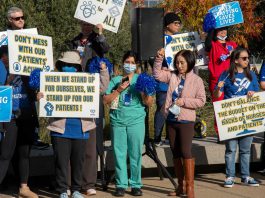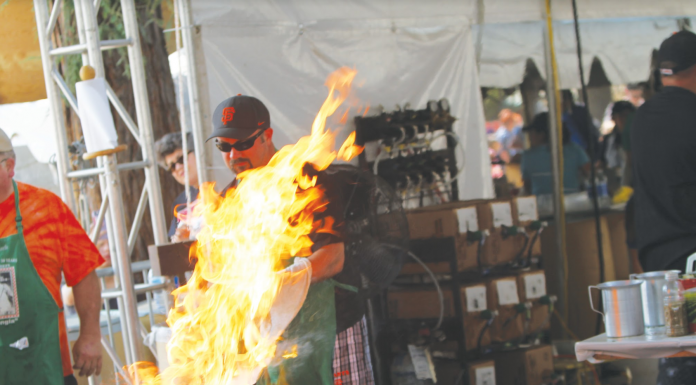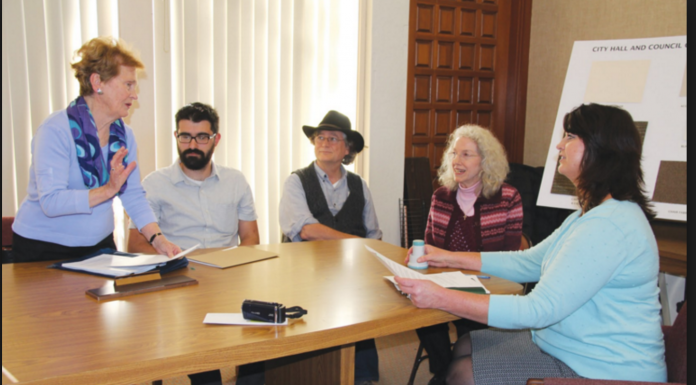A Look Back: 2016 Garlic Fest
The 38th annual Gilroy Garlic Festival has come and gone, and while attendance numbers are down over last year’s, organizers say they should still be on track to reaching $11 million in donations over the lifetime of the event.
Motorcyclist Injured by PokémonGo Players
Gilroy Police reported an injury accident caused by Pokémon players. From a police report:"On the evening of July 21, 2016, a driver and his passenger were driving around looking for Pokémon in the area of First Street and Wren Avenue. The passenger, who was playing Pokémon Go on her cell phone, spotted one in the cemetery as they were driving by."In an effort to capture the Pokémon, the driver suddenly applied the vehicle brakes to make the right turn into the cemetery. A motorcyclist that was behind the vehicle did not have time to react and collided into the rear of the car."The impact caused the motorcyclist to fall to the roadway and skid on the ground before coming to a stop along the cemetery fence. The motorcyclist sustained minor injuries and was transported to a local area hospital treatment."The driver and passenger who were attempting to catch the Pokémon were released at the scene. A police report was written for documentation purposes."
Gilroy is Safe from Zika Virus, So Far
While the mosquito-borne Zika virus has made headlines, local residents can take comfort that the two mosquito species that carry Zika, have not been found in the county since mosquito season started in March, according to Santa Clara County Vector Control District.
Councilman Dion Bracco in his own Words
A fourth-generation Gilroyan and small business owner who worked his way up from the bottom, Gilroy City Councilman Dion Bracco is a plain-spoken local leader with a real passion for his community. He has seen Gilroy grow from a small agricultural town into a commuter hub impacted by the growth of Silicon Valley. Instrumental in the founding of the Compassion Center and the South County Youth Task Force, Bracco believes issues like homelessness and gang suppression are best solved regionally. He has been a council member since 2005.
Bikers Mar Creek
A California Conservation Corps crew clearing hiking trails along the Uvas Creek Tuesday stumbled on evidence that kids who had built an illegal labyrinth of dirt bicycle jumps in the protected creek a few years ago preserve are at it again.
To Drone or Not to Drone?
Gilroy insurance executive Annie Palmer was startled out of a deep sleep at 1:30 a.m. recently when she heard something outside her Hannah Street window that sounded like a thousand bumble bees.It was a hot night and she had the window open.“I was really frightened,” she said. “I had no idea what it was.” She went outside with a flashlight and saw that it was a drone. She tried following it, but lost it.The same day—but at 10:30 p.m.—it was outside her window again. This time she called the Gilroy Police Department, where an officer first told her there was nothing they could do about it, but then, realizing it was so late at night that it was disturbing the peace, told her they’d look into it.She never heard back, but the following afternoon, while she was gardening, the drone was back again.This time, she took action.“I felt violated,” Palmer, 58, said. “It was really creepy. I felt like I had to hide in my house. It was definitely a violation of my privacy.”So, she followed the drone and found its owner on a street with a laptop computer piloting the device. He told her the drone had no camera, so she shouldn’t feel bothered.But she was. So were plenty of her neighbors who felt they were violated by this drone pilot.They filed complaints with the police and with Mayor Perry Woodward, who brought it up at the last City Council meeting and asked city staff to research what laws they can pass to protect the rights of residents, while possibly allowing drones to still fly.“They are fun to fly,” said Woodward in an interview. He is also a commercial pilot and an attorney and has long considered the problem of what he calls a technology in its “Wild West” phase. “I’ve flown them. But I don’t want to see someone flying one outside my daughter’s window. There has to be a balance.”Santa Clara County’s Open Space Authority has banned piloting drones from its parks. Los Angeles has classified drones with model airplanes, limited their use to daylight hours and forbidden them from flying more than 400 feet high, which is beyond the pilot’s ability to see them, making them dangerous to people on the ground. It also requires drones to stay away from hospitals and schools.In a proposed ordinance, Phoenix has asked for drones to be illegal if they are filming in a way that violates privacy.Hermosa Beach has passed legislation to require drone operators to have permits and stay 25 feet away from people.Woodward asked city staff to look into what’s being done in other cities and come up with a report for the council. Then, it would go to public hearings so they can hear from drone supporters and opponents and come up with city laws that will represent residents’ needs.He said he’s received many complaints about violations of privacy and concerns for safety of people on the ground.Police spokesman Sgt. Jason Smith said the department has its hands tied because there aren’t yet laws about drone use.“So in essence, we have to weigh the circumstances of a call involving a drone to see if it violates any of the laws that are currently in place,” he said. “For instance, under the right circumstances, the penal code sections for being a public nuisance or a peace disturbance might apply.”He added that “the department would have to determine if the act of flying the drone met the criteria for a law violation (and there is not yet a drone-specific law); the person would have to be willing to sign a citizen’s arrest; and we would have to identify the pilot of the drone and further investigate his/her intentions.”
What’s Faster to San Jose, Train, Car or Bus?
Like the movie Groundhog Day, every morning some 60 percent of Gilroy residents take the same trip over and over to their jobs in San Jose and Silicon Valley and they have to figure out the best, fastest and cheapest way to get there.
Gilroy Growth Goes to Vote
Gilroy voters will decide in November whether the city of 55,000 should limit sprawl, after a unanimous vote by the City Council Tuesday night. There will be an item on the ballot asking whether Gilroy residents should vote on future proposed developments and whether the city should keep some of the areas on its borders as open space.
Growth initiative qualifies for November Ballot
Gilroy’s urban growth boundary (UGB) initiative has more than the required number of signatures needed to qualify for the November ballot.

















